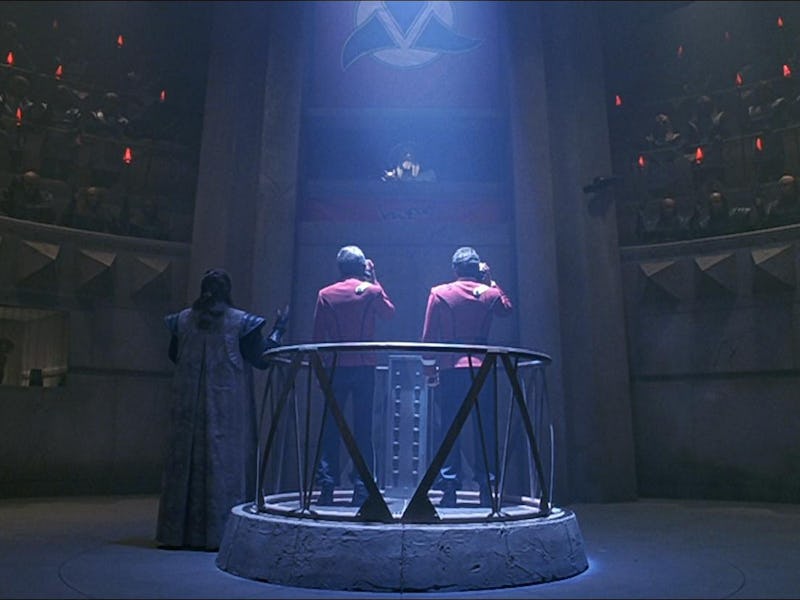Lawsuit Over 'Star Trek' Fan Film 'Axanar' Goes to Jury
An outcome of the case will be measured by "subjective substantial similarity."

The contentious lawsuit filed by CBS and Paramount against Star Trek fan film production Axanar will now head to trial. A jury will determine whether the un-produced movie, which billed itself as the most professional fan film ever made, infringed on the copyrights held by the Viacom-owned companies.
On Wednesday, Deadline reported that U.S. District Court Judge R. Gary Klausner ruled that the accusation from CBS and Paramount that the fan film Axanar does indeed have “objective substantial similarity to the Star Trek copyrighted works,” but stopped short of ruling one way or another. “The court leaves the question of subjective substantial similarity to the jury.”
Legally, the precedent for a subjective similarity in a copyright case is connected to the idea of an “intrinsic test,” which is part of a “total concept and feel” test. The distinction between an extrinsic (objective) and intrinsic (subjective) test was delineated in 1977 in the case of Sid & Marty Krofft Television Productions Inc. v. McDonald’s Corp. Like the contemporary Star Trek lawsuit, similar fictional versions of characters and imaginary locale collided when the makers of Pufnstuf and McDonaldland battled it out in court. The precedent created was simply that cases like this could be decided by a non-expert jury with court finding that “analytic dissection and expert testimony are not appropriate.”
LEFT: A starship from 'Axanar.' RIGHT: The USS Enterprise in 'Star Trek VI.'
This historical precedent checks with what Klausner has said about Axanar in his statement, which says that in order for the CBS/Paramount suit to stick, “an ordinary, reasonable person [must] find the total concept and feel of the two works to be substantially similar.” In other words, what a non-Trekkie might think and feel about all of this might end up being the last defensive shield for Axanar, or the final photon torpedo that CBS and Paramount need to declare victory.
The creative forces behind Axanar have stated over and over again that what they wanted to do with their fan film is substantially different in tone and feel from existing Star Trek stories, despite borrowing concepts like the Vulcans, and the war with the Klingon Empire. Axanar director Robert Meyer Burnett told Inverse in December that “Axanar dealt with politics and war in a very different way, like you’ve never seen in the Star Trek universe.”
LEFT: Richard Hatch as a Klingon in 'Axanar.' RIGHT: Christopher Plummer in 'Star Trek VI: The Undiscovered Country'
Much of the Axanar controversy has been pinned to the idea that the production raised an unprecedented amount of money. But now, the $1.2 million raised doesn’t seem to be the deciding factor. Instead, the trail is back to basics. Does this look like “real” Star Trek, or not?
Because CBS’s upcoming series Star Trek: Discovery takes place in a similar point in the fictional timeline as Axanar, some fans have started to speculate that CBS/Paramount might have been motivated to shut down Axanar simply because the fan film would create a divergent set of continuity about the Klingon War, something that the studios are very interested in at the moment. It’s also very possible that the professionalism going into Axanar would so far exceed any previous fan film that CBS/Paramount finally felt the need to step in to protect its property, which it had previously been liberal about sharing.
Klingon courtroom in 'Star Trek VI.'
In Star Trek VI: The Undiscovered Country, Kirk and Bones are framed for murder, and sentenced to live on a frozen penal colony on an asteroid. There, the court of Klingons wanted a mistrial of justice. If only the lines of good and bad were as clear in our own universe.